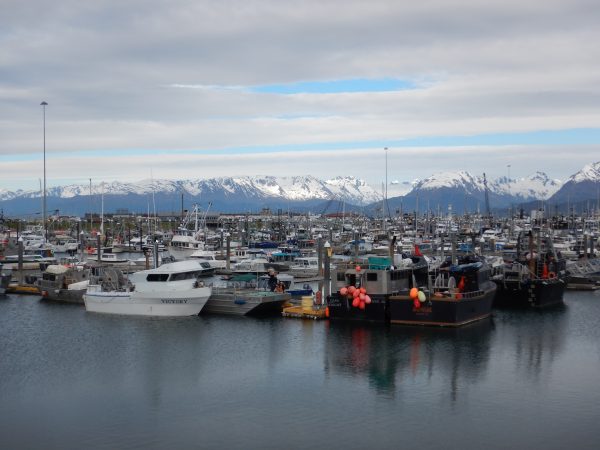Seeking more than one species stabilizes fishing income
September 28, 2017
Lauren Frisch
907-474-5350
Commercial fishermen in Alaska who target a greater diversity of species have more
stable incomes than fishermen who target one species, but diversifying isn’t easy,
according to a study published in the Proceedings of the National Academy of Sciences.

For people who make a living by harvesting natural resources, income volatility is a persistent threat. Crops could fail. Fisheries could collapse. Forests could burn. These and other factors — including changing management regulations and practices — can lower harvests, which depresses income for farmers, fishers and timber harvesters. But the ways that these forces interact to impact income have been difficult to track, especially at the level of the individual worker.
A team of researchers from the University of Alaska Fairbanks, University of Washington, National Oceanic and Atmospheric Administration and the Alaska Department of Fish and Game studied about 30 years of income and permit data from individual commercial fishermen in Alaska to learn how diversification affects income stability.
Diversification can help reduce risk and uncertainty for fishermen. In any given year, a fisherman with multiple fishing permits has a number of options.
“If you’re fishing for species whose numbers fluctuate a lot, it’s good to diversify because maybe when one of your target species is low in numbers, another will have higher abundance that year,” said Anne Beaudreau, a professor at the UAF College of Fisheries and Ocean Sciences. “When you diversify, you always have options.”
“One option for diversification is to target different species or fish with different permits, as we see in this study with commercial fishermen,” Beaudreau said. “But in a separate study, we found that charter fishermen are fishing for a diversity of species and targeting different areas. There are a number of ways to be flexible and make this approach work.”
Although this research shows that diversification is a safer bet for Alaska’s commercial fishermen, about 80 percent of fishermen currently hold only one fishing permit. Certain barriers to entry make it challenging for fishermen to diversify. For some species, there is a limit to the number of permits that can be purchased, and these competitive permits can cost hundreds of thousands of dollars.
“We do not know which factors — including fishing costs, natural forces, market demand and management policies — have made the majority of individual fishers specialize despite high income variability,” said University of Washington professor Eric Ward. “But additional research may, in time, help scientists and policymakers come up with practices that can reduce income variability for fishers and keep fishery harvests sustainable.”
The project was spearheaded by Sean Anderson and Eric Ward at the University of Washington. UAF College of Fisheries and Ocean Sciences faculty members Beaudreau and Milo Adkison and graduate students Jordan Watson and Ben Williams participated. The research was funded by the National Center for Ecological Analysis and Synthesis, Exxon Valdez Oil Spill Trustee Council, David H. Smith Conservation Research Fellowship Program and the National Oceanic and Atmospheric Administration.
Learn more about the project from the University of Washington Press release, or read this paper in the Proceedings of the National Academy of Sciences.


